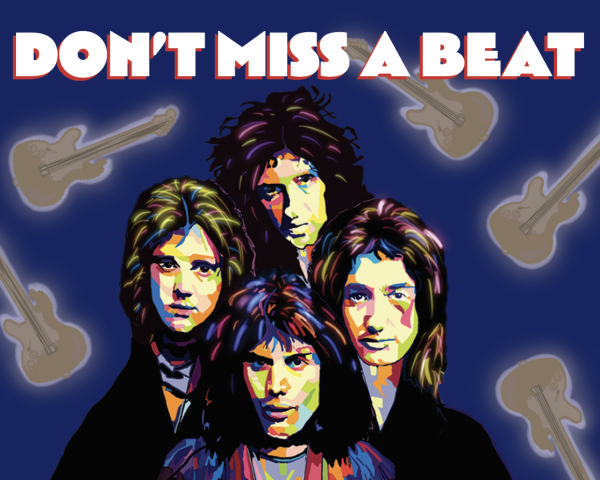Music is Medicine
Can listening to your favorite tunes be medically therapeutic?
Whether it’s used as background noise to focus while studying or as a way to calm your nerves, whether you prefer head-banging rock or windows down country, music has a vast and immense impact on everyone it touches. Scientists have been turning this concept into a substantial, controlled method known as music therapy which has been an up-and-coming form of addressing the physical, emotional, cognitive and social needs of individuals.
Listening to music has always been a way for people to freely feel emotions. Paly senior Anirudh Bharadwaj makes songs with the pure intention of making people happy.
“Music is definitely a good practice to calm yourself down,” Bharadwaj said. “Especially during college app season, I’ve found myself making music more to reduce stress, similar to many others who can de-stress by just listening to music.”
Alec Johnson, an intern at The Music Therapy Center of California, has been playing instruments since he learned the piano at eight years old, also as a therapeutic way to express himself.
“I remember seeing the serene look on people’s faces when I played music,” Johnson said.“That feeling when the music captures you is something I can only describe as transcendental.”
Being an artist or producer amplifies the remedial value of music and many musicians today use their pieces as a form of expression.
“Music definitely puts me in a zone,” Bharadwaj said. “It’s hard to get me away from it once I start, and it’s also hard to disturb me when I’m producing. What’s going on in my mind is hard to describe, but I’m usually at my happiest when I’m in the studio.”
The overall positive reaction to music has been discovered to have a logical cognitive effect on the brain. Johnson and his team focus on exploring and experimenting with the neurological workings of the brain when hearing sounds.
“One can think of the brain as composed of a plethora of mini super-computers, each having a designated function,” Johnson said.
While our visual systems engage relatively local and lateral brain areas, music processing requires global engagement.
“It coordinates and synchronizes virtually every part of the brain: your visual, tactile, auditory executive functions, your memory of your emotion, all these different things,” Johnson said. “When someone is engaged in music and you look at [their] brain scans, you’ll find the entire brain is more active.”
Although a relatively new and underdeveloped field, this alternative therapy has shown much progress, and scientists are constantly improving and discovering methods.
“In order to assess a situation and to design a program for someone, we use the Transformational Design Model (TDM) that looks at their diagnosis and then creates a non-musical exercise for whatever you’re targeting,” Johnson said. “Then you transform that non-musical activity into a musical activity and eventually fade out the music.”
Music therapy uses our sense of hearing as a vessel to help rehabilitate and develop functions in need of targeting.
“Any clinical intervention can be transformed into a musical activity, such as physical therapy or behavioral therapy,” Johnson said. “Music is a really good tool because it’s intrinsically motivating and it facilitates social interaction.”
Through its short span of development, many have already seen its effect.
“I have personally seen a positive impact through music on my music production platform The WAVE, a platform bringing emerging market artists to the world stage through electronic music,” Bharadwaj said. “Just sharing music ideas and hearing other projects helps inspire and motivate the next generation of producers, and moreover, helps me deliver on my promise to ‘make people happy.”
In addition to making people feel different emotions, music therapy has a great variety of purposes it contributes to, including learning disabilities, mental health issues, etc. The Music Therapy Center specifically targets intellectual and developmental disabilities.
“Only a month into my internship, I’ve seen the progression of our client’s progress in the realms of social interaction, speech function, sensory integration and motor coordination,” Johnson said.
Due to a brain’s individuality, music therapy must be altered and modified depending on the person, changing the methodology. In autism, for example, the disability is a spectrum and there are a variety of ways that the disorder can manifest. Thus, a variety of distinct methods are used to help treat autism.
“Music naturally facilitates social interaction,” Johnson said. “When you play with someone else, it requires you to listen to them, and essentially you’re synchronizing your brain and body with the other person. I had someone [who was mute] who was unable to carry a conversation, to engage socially with someone and I saw a huge transformation in their ability to engage through music.”
Music therapy is also often combined with other forms of self-help to amplify their effects.
“It’s a great supplement to physical therapy because, in the transformational design model, you can take whatever protocol they’re using in physical therapy, and transform that into a musical activity in order to leverage the effects that music can have,” Johnson said.
A crucial part of music therapy is the requirement for adjustability and must also account for personal taste and memories. It is a highly subjective field and demands a fair amount of training to be sufficient.
“You might make the assumption that soft music is very relaxing, and heavy metal music is very stimulating,” Johnson said. “However, for some people, it might be the complete opposite. There are associations or memories attached to that music which is why individualization is really important.”
Music can be immensely therapeutic for many but music therapy, as a studied program, is often overlooked and misunderstood in the medical field when in reality, it has proven to be extremely beneficial in the treatment community.
“Music is so influential and ubiquitous in human behavior throughout history, regardless of culture,” Johnson said. “Music is not an arbitrary activity which is why it is so tragic that it is being underappreciated in basic education systems.”
Print Issue
Please click on the three vertical dots on the top right-hand corner, then select “Two page view.”

2022-2023 Staff Writer
2023-2024 Editor-In-Chief
I joined C Mag because I was drawn in by the diversity of design and creativity throughout each...

2022-2024 Staff Writer
I joined C Mag to explore a creative side and share stories with everyone. I have two older brothers and two dogs. I enjoy playing...






